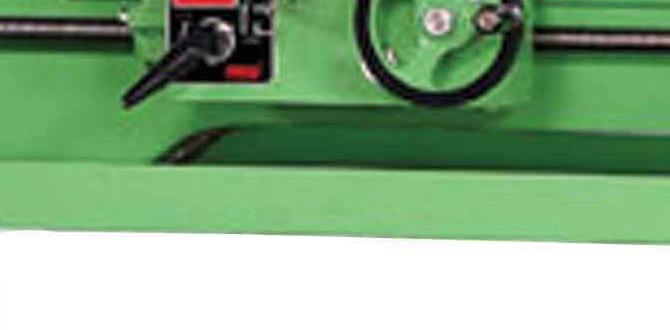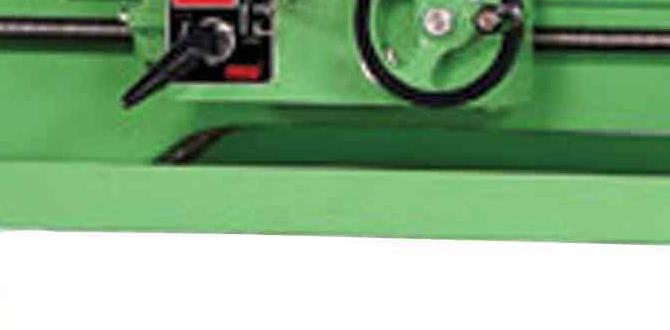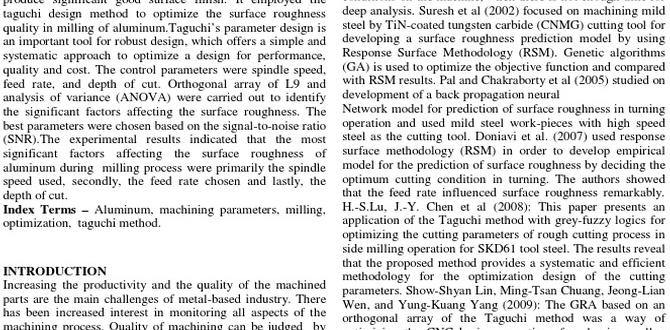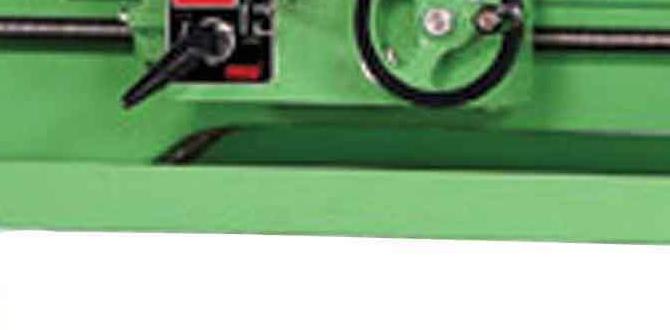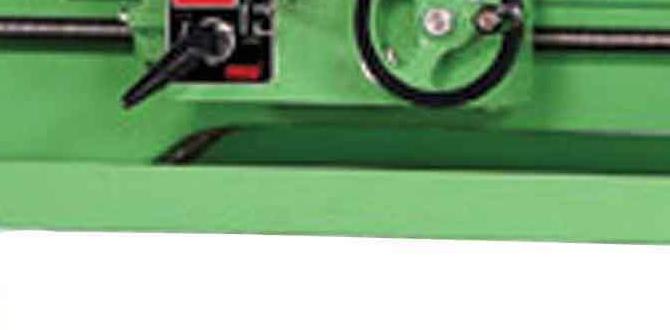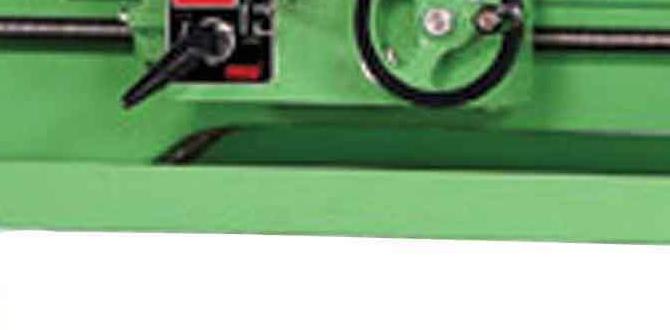Bar Feeder for Lathe: Your Essential Guide
A bar feeder for your lathe automates material feeding, boosting efficiency and precision for repetitive tasks. It significantly reduces manual intervention, allowing for more complex or extended runs and improving overall productivity. This guide breaks down everything you need to know to understand and benefit from this essential machine tool accessory.
Hey there, fellow makers and machinists! Daniel Bates here from Lathe Hub. Ever looked at a long piece of stock on your lathe and thought, “There’s got to be an easier way to feed this in?” You’re in the right place! If you’re tired of manually pushing material into your lathe for every single part, a bar feeder might just be the game-changer you’ve been looking for. It’s like giving your lathe an extra set of hands, making those long production runs or repetitive jobs a whole lot smoother and more accurate. We’re going to break down exactly what a bar feeder is, how it works, and why it can be a fantastic addition to your workshop, no matter your skill level. Let’s get your lathe working smarter!
What is a Bar Feeder for a Lathe?
At its heart, a bar feeder is an automatic device that holds a bar of raw material (like metal or plastic stock) and, as your lathe finishes machining one part, it pushes a new length of that bar into the lathe’s chuck or collet. This process repeats tirelessly, allowing the lathe to produce multiple identical parts without constant operator intervention.
Think of it like this: Instead of you stopping the lathe, manually advancing the stock, and restarting, the bar feeder does that job for you. It’s a sophisticated piece of engineering designed to keep your lathe running productively and accurately.
Why Use a Bar Feeder? The Big Benefits
Adding a bar feeder to your lathe setup isn’t just about convenience; it brings significant advantages:
- Increased Productivity: This is the primary reason. With automation, your lathe can run for extended periods producing parts, significantly boosting output compared to manual feeding. You can set it up and walk away, knowing it’s working.
- Improved Accuracy and Consistency: Bar feeders push the stock to a precise depth every time. This consistency is crucial for producing identical parts with tight tolerances, reducing scrap and rework.
- Reduced Labor Costs: For production runs, one operator can often monitor multiple machines equipped with bar feeders, as opposed to manually operating each one. This frees up skilled labor for more complex tasks.
- Enhanced Safety: Repeated manual feeding of stock can lead to fatigue and potential errors. Bar feeders remove the operator from the immediate vicinity of the rotating chuck and spinning workpiece for the feeding operation, improving safety.
- Ability to Use Full Bar Length: You can load an entire bar of material into the feeder, minimizing material waste and reducing the frequency of loading new bars.
- Optimized for Repetitive Tasks: If you regularly produce the same or similar parts in batches, a bar feeder quickly pays for itself by dramatically speeding up the process.
How Does a Bar Feeder Work?
While there are variations, the fundamental principle behind most bar feeders is straightforward:
- Loading the Bar: A bundle or single bar of raw stock is placed into a guiding channel or trough within the bar feeder.
- Gripping and Pushing: The bar feeder has a mechanism (often a collet or specialized gripper) that securely grips the end of the bar. This mechanism then pushes the barstock forward into the lathe’s spindle.
- Positioning: The bar is pushed until it reaches a predetermined stop, ensuring consistent part length. This stop might be part of the lathe’s setup or integrated into the bar feeder system.
- Retracting: Once the part is machined and cut off, the bar feeder retracts its pushing mechanism, clearing the way for the next cycle.
- Feeding the Next Bar: The feeder then advances another length of stock, and the cycle repeats.
Key Components of a Bar Feeder
Understanding the parts helps demystify the operation:
- Magazine/Trough: This is where the raw material bars are stored and guided towards the feeding mechanism.
- Pushing Mechanism: The core component that grips and shoves the stock into the lathe. This could be a collet system, a carriage-like device, or hydraulic/pneumatic pushers.
- Guide Bushing: Many systems use a guide bushing mounted in the lathe’s spindle. This bushing supports the material close to the cutting tool, reducing vibration and improving surface finish and accuracy, especially for smaller diameter stock.
- Control System: This manages the movement of the pushing mechanism, its speed, and its timing in relation to the lathe’s operations.
Types of Bar Feeders
Bar feeders come in several designs, each suited for different applications and lathe types. Knowing these distinctions can help you choose the right one:
1. Magazine Bar Feeders
These are the most common type for small to medium lathes. They typically involve a long feeding channel where multiple bars can be loaded. Stock is pushed through a guide bushing.
- Pros: High capacity, relatively simple operation, excellent for long runs of small-diameter parts.
- Cons: Setup can be more involved for different bar diameters, guide bushing is essential for stability and may restrict some operations.
2. Rotary Bar Feeders
These feeders often use a rotating collet or chuck to grip and feed the bar. They can handle larger diameter stock and may not always require a guide bushing, offering more flexibility for certain jobs.
- Pros: Can handle larger stock diameters, often more versatile, may not require a guide bushing.
- Cons: Can be more complex and expensive, might require more floor space.
3. Hydraulic Bar Feeders
These systems utilize hydraulic power for a robust pushing force, making them ideal for heavier or tougher materials and larger diameter bars. They often use specialized grippers.
- Pros: Powerful, suitable for demanding materials and larger stock.
- Cons: Can be more complex to maintain, require hydraulic power supply.
4. Pneumatic Bar Feeders
Similar to hydraulic but powered by compressed air. They are generally lighter duty and suitable for smaller diameter stock and less demanding applications.
- Pros: Simpler than hydraulics, uses existing compressed air supply.
- Cons: Less pushing power than hydraulic, best for lighter tasks.
5. CNC Lathe Bar Feeders
These are specifically designed to integrate seamlessly with CNC (Computer Numerical Control) lathes. They often feature advanced control systems that communicate directly with the CNC lathe’s controller for synchronized operation, automatic diameter adjustment, and sophisticated programming.
- Pros: High level of automation, precision synchronization with CNC lathe, often feature advanced setup and control capabilities.
- Cons: Typically the most expensive option, requires compatibility with specific CNC lathe models.
Choosing the Right Bar Feeder
Selecting the appropriate bar feeder depends on several factors:
- Lathe Size and Spindle Capacity: The bar feeder must be compatible with the maximum and minimum bar diameter your lathe can handle and fit physically onto your lathe bed.
- Material Type and Diameter: Will you be feeding solid steel, aluminum, plastics, or tubing? Are the diameters mostly small, medium, or large?
- Production Volume: For high-volume production, investing in a more automated and robust system is usually worthwhile.
- Budget: Bar feeders range from a few thousand dollars for simpler, manual types to tens of thousands for advanced CNC integrated units.
- Floor Space: Some bar feeders, especially magazine types, can add significant length to your lathe setup.
- Complexity of Parts: Do you need a system fine-tuned for identical parts, or do you need flexibility for varied operations?
A good starting point for beginners is often a reliable magazine bar feeder for a standard lathe, as these offer a great balance of capability and cost for most workshop needs. For example, brands like LAKEN, Cimcool, and various others offer systems that can be adapted to common lathe models. Always consult the manufacturer’s specifications and your lathe’s capabilities.
Setting Up and Operating a Bar Feeder
Setup can vary significantly, but here’s a general overview of what to expect:
1. Installation
Bar feeders typically attach to the lathe bed, often at the tailstock end, pushing material towards the headstock. This usually involves:
- Mounting the base: Securing the bar feeder’s main support structure.
- Aligning with the spindle: Ensuring the feeding mechanism and magazine are perfectly in line with the center of the lathe’s spindle. Misalignment is a major cause of problems.
- Connecting to the lathe: Some feeders have simple mechanical links, while others with advanced controls require electrical or pneumatic connections.
- Adding Guide Bushing (if applicable): Installing the correct size guide bushing into the lathe’s spindle collet or chuck.
2. Loading Material
Ensure the bar stock is of consistent diameter within the feeder’s range and free of burrs or damage that could jam the mechanism.
3. Setting the Feed Length
This is a critical step for part accuracy. Most bar feeders have an adjustable stop or a programmable length setting. You’ll need to accurately measure and set how far the bar should advance for each part.
4. Adjusting Speed and Pressure
The rate at which the bar is fed and the force applied need to be optimized. Too fast can cause jarring, while too slow reduces efficiency. Too much pressure can damage delicate stock or the feeder mechanism.
5. Synchronizing with the Lathe (Crucial!)
The bar feeder’s cycle must be synchronized with your lathe’s machining cycle. This means the feeder only pushes the next bar segment after the previous part has been cut off and the turret/tool post has retracted enough to clear the new stock.
- Mechanical Synchronization: Older or simpler systems might use limit switches or mechanical triggers connected to the lathe’s Z-axis movement or spindle rotation.
- Electrical/Pneumatic Synchronization: More common now, this involves signals from the lathe’s controller to the bar feeder, or vice-versa. This allows for more precise timing and often automatic adjustments. Many modern lathes have built-in outputs for bar feeder control.
This synchronization is paramount for safe and efficient operation. A misplaced push can damage tools, parts, or the machine itself.
6. Running the First Part
Always run the first part manually or with careful observation. Watch how the bar feeds, how it seats against the stop, and how the cutting sequence proceeds. Make adjustments as needed. A good practice is to have a “dry run” with the spindle off to ensure smooth mechanical movement.
Safety First with Bar Feeders
While bar feeders enhance safety by reducing operator proximity, they introduce their own set of safety considerations:
- Ensure Proper Guarding: Keep all guards in place and functional. Never reach into a moving bar feeder or around a spinning lathe chuck.
- Material Handling: Be careful when loading heavy bars of stock into the feeder. Use appropriate lifting aids if necessary.
- Jam Prevention: Always ensure the stock is properly supported and aligned. A jammed bar can cause significant damage and pose a safety risk.
- Emergency Stops: Know the location of all emergency stop buttons for both the lathe and the bar feeder.
- Correct Setup: Incorrectly set feed lengths, speeds, or synchronization can lead to catastrophic failures. Double-check all settings.
- Training: Ensure anyone operating the machine is properly trained on the specific bar feeder and lathe system. Organizations like OSHA provide valuable resources on machine safety, which are always good to review.
Maintenance and Troubleshooting
Regular maintenance keeps your bar feeder running smoothly:
- Lubrication: Keep all moving parts well-lubricated according to the manufacturer’s recommendations.
- Cleaning: Remove chips and debris from the magazine and feeding mechanisms regularly.
- Inspection: Periodically check for wear on collets, grippers, and guide bushings.
- Alignment Checks: Verify alignment with the spindle periodically, as vibrations can cause it to shift over time.
Common Troubleshooting Scenarios
Here are some issues you might encounter and how to address them:
| Problem | Possible Cause | Solution |
|---|---|---|
| Bar does not feed | Gripper not engaging, pneumatic/hydraulic pressure low, control signal issue, obstruction. | Check for obstructions, verify pressure, inspect gripper/collet, check control wiring/signals. |
| Bar feeds too far or not far enough | Incorrectly set feed stop, faulty sensor, incorrect programming. | Re-set or re-calibrate the feed stop/sensor, verify program settings. |
| Jamming during feed | Misaligned bar, bent bar, worn guide bushing, obstruction in the spindle. | Ensure proper alignment, inspect bar for straightness, check/replace guide bushing, clear spindle. |
| Excessive noise or vibration | Misalignment, worn components, insufficient lubrication, incorrect speed. | Re-align feeder, inspect for worn parts, lubricate accordingly, adjust feed speed. |
| Inconsistent part lengths | Loose gripping mechanism, incorrect feed stop positioning, bar slipping, spindle runout. | Tighten collet/gripper, re-set stop, check bar seating, inspect spindle for runout. |
Always refer to your specific bar feeder’s manual for detailed troubleshooting steps. If you’re unsure, it’s best to consult a qualified technician.
Advanced Features and Considerations
Modern bar feeders can offer more than just basic feeding:
- Automatic Diameter Adjustment: Some high-end feeders can automatically adjust their collets or grippers to accommodate bars of different diameters, saving significant setup time.
- Vibration Dampening: Specialized designs or materials are used to minimize vibration, especially crucial when machining long, slender parts or using smaller diameter stock.
- Short Bar and Remnant Management: Systems can be programmed to recognize when only a short piece of bar remains, signaling the end of the batch or preventing a feed attempt with a remnant too small to be useful.
- Integration with Automation: Bar feeders are often a component in larger automated work cells, working alongside robots for loading raw stock or unloading finished parts.
For those working with very small diameter stock or performing high-precision micro-machining, specialized bar feeders and collet systems are available. For example, the use of extremely accurate collets, like those from Tecnara or Lyndex-Nikken, can be critical. These systems ensure minimal runout and consistent gripping force for delicate operations.
Is a Bar Feeder Right for Your Workshop?
If you find yourself frequently making multiple identical parts, spending a lot of time repeatedly feeding stock into your lathe, or wishing your lathe could run more autonomously, then a bar feeder is definitely worth considering. They are invaluable for:
- Production shops looking to maximize throughput.
- Small job shops that need to efficiently handle batch orders.
- Hobbyists and makers who want to automate repetitive designs and free up their time.
- Educational institutions teaching machining best practices and efficiency.
While there’s an initial investment and a learning curve, the gains in productivity, consistency, and safety often make a bar feeder a highly beneficial addition to any lathe setup, especially for anyone serious about increasing output and precision.
Frequently Asked Questions (FAQ)
Q1: What is the most significant advantage of using a bar feeder?
The most significant advantage is drastically increased productivity through automation. It allows your lathe to run continuously, producing parts without constant operator intervention.
Q2: Do I need a specialized lathe to use a bar feeder?
No, many bar feeders are designed to be retrofitted to standard manual or CNC lathes. However, the lathe must have a hollow spindle capable of allowing the bar to pass through. CNC lathes often have dedicated interfaces for easier integration.
Q3: Are bar feeders difficult to set up?
Setup can range from straightforward for basic models to more complex for advanced CNC-integrated units. Key steps include installation, alignment, and programming the feed length and synchronization. Following the manufacturer’s manual is crucial.
Q4: Can a bar feeder handle different bar materials?
Yes, bar feeders can handle various materials like steel, aluminum, brass, and plastics, provided the material is within the feeder’s specified diameter range and the operator adjusts settings like feed pressure appropriately.

